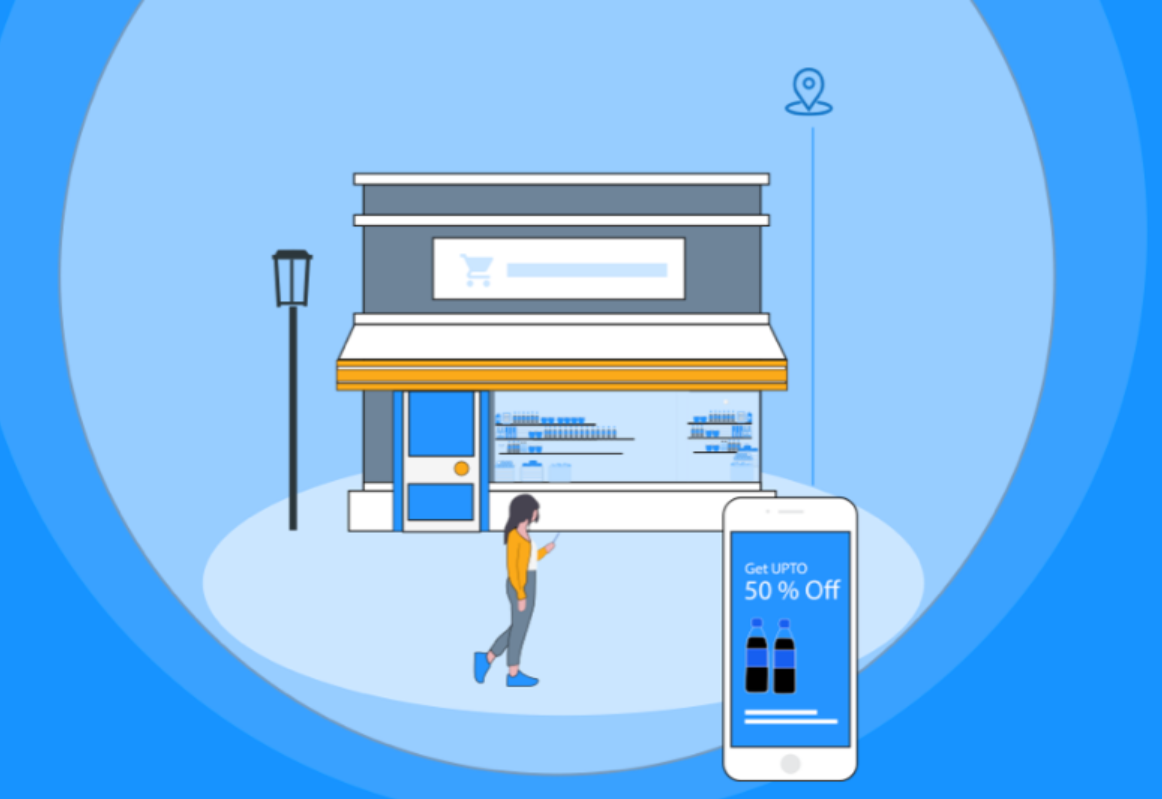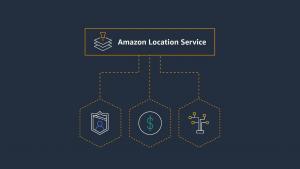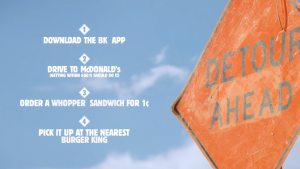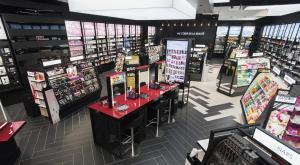
In this day and age, marketing has become so personalized and curated that consumers expect every ad to be specific to their needs, and they feel disappointed by anything less relevant or generic. Now, localization has become a key aspect of personalized marketing. This marketing within a specific geographic location can easily be done through geofencing marketing. In this blog, we will understand what is geofencing marketing and how it can make targeted ad campaigns more efficient and increase revenue.
What is geofencing marketing
Geofencing essentially means creating a virtual boundary around a real-world location using specialized software or apps. It relies on a combination of technologies, like GPS, Wi-Fi, cellular networks, and Bluetooth. It targets those who live or enter a geographic area. It uses GPS or RFID technology to create virtual boundaries, and when a mobile device enters or exits these predefined boundaries, it triggers an action like a targeted marketing message, sending a promotion to the user’s device or prompting a notification with a special offer, or even displaying a location-specific message within an app.
For example, imagine a coffee shop creates a geofence around its competitor’s location. When a phone enters that geofence, the coffee shop can send a notification to the phone offering a discount on their latte.
How does geofencing marketing work
Like every other marketing plan, geofencing marketing follows a strategy to make it effective and achieve the desired goals. Here’s an idea of how you should curate a plan for geofencing marketing and the key steps to follow.
1. Define your target audience and goals
Before setting up geofences, identify who you want to reach. Are they existing customers or new ones? Are they people with specific demographics or interests? Understanding your ideal customer will help you choose the right locations and craft targeted messaging. Additionally, set clear goals for your campaign. Do you want to drive in-store visits, increase brand awareness, or promote a special offer? This will help you target customers more likely to take your desired action.
2. Choose your geofencing locations
Once you know your target audience, decide where to place your geofences. This could be around your brick-and-mortar store, competitor locations (to target their customers who might be open to trying your brand), complementary businesses (like a coffee shop near a bookstore), or even event venues that your ideal customer might be attending.
3. Set up geofences and triggers
Marketing platforms with geofencing features allow you to define the virtual boundaries of your geofence. You can choose a simple circle around a specific location or create more complex shapes to encompass relevant areas. Next, determine the triggers that will activate your ad. Will it be when someone enters the geofence (great for attracting new customers to your store), exits it (potentially enticing someone who left a competitor’s store to visit yours), dwells within it for a certain amount of time (useful for reminding attendees about a booth visit at an event), or a combination of these?
4. Craft a compelling ad
The next step is to design an eye-catching ad or notification tailored to your target audience and the specific trigger. These ads should:
Be relevant: The ad should be relevant to the user’s location and the trigger. For example, someone entering your geofence might receive a welcome message with a discount offer, while someone exploring a launch event venue might get a reminder about a special product demonstration.
Highlight the benefit to users: Clearly communicate the value proposition of your offer. Are you promoting a sale, a loyalty program perk, or a limited-time event?
Include a clear call to action: Tell users what you want them to do next, whether it’s visiting your store, redeeming a coupon, or downloading an app.
5. Use “enter” and “exit” conditions
While geofencing marketing is mostly about targeting users who enter the geographic location, it should also make them feel valued even when they are exiting the area. This can be done by adding enter and exit triggers in your campaigns.
For example, as a customer or user enters your defined area, send them a welcome message or discount offer. Now, when they are exiting, remind them of an ongoing sale they shouldn’t miss before they leave.
6. Deliver the ad and track performance
When someone with location services enabled enters the geofence and meets your trigger criteria, they’ll receive your ad on their mobile device. Most geofencing platforms offer analytics that allows you to track the performance of your campaign. Monitor key metrics like impressions, clicks, conversions, and engagement rates. This data will help you understand how effectively your geofence is reaching your target audience and achieving your goals.
7. Refine and optimize
Based on your campaign results, you can refine your geofencing strategy. For example, you might adjust the size or location of your geofences, optimize the timing of your ads, or tailor your creative for better performance. By continuously analyzing and improving your campaigns, you can maximize the return on investment from your efforts.
How to set up geofencing marketing
There are a number of tools that come will the complete set of features to streamline your geofencing marketing plans. These tools help you to:
- Define your target area
- Draw polygons and shapes for geofencing
- Define your target audience and message
- Create and launch your campaign
- Monitor and optimize your campaign
Here is a brief description of some of the most common white label geofencing platforms for marketing and how to use them:
1. GeoFli
GeoFli allows businesses to create virtual boundaries, known as geofences, around specific geographic areas of interest. These geofences can be customized in terms of size and shape to target desired locations such as business premises, event venues, or competitor locations.
Once the geofences are set up, GeoFli tracks the location of website visitors using their IP addresses or other location-tracking methods. When visitors enter a geofenced area, GeoFli detects their location in real-time. You can also design different versions of your website content (text, images, offers) based on user location.
2. PlotProjects
PlotProjects is a geofencing and location data platform that handles over 90 billion location triggers per month and provides Software Development Kit (SDK), APIs, and a dashboard for building accurate and efficient location functionalities into mobile apps. Businesses can integrate the PlotProjects SDK into their mobile apps, and it is compatible with both iOS and Android platforms.
Once integrated, businesses can create virtual boundaries called geofences around specific locations of interest, such as their own stores, event venues, or competitor locations. When users enter or exit a geofenced area, PlotProjects tracks their device’s location in the background using GPS and other location services and triggers targeted push notifications to be sent to users’ devices.
3. LocationSmart
It provides a cloud-based geolocation platform that enables businesses to tap into real-time geolocation data for various use cases. Setting up the geofencing with LocationSmart is simple. Businesses or companies only have to identify the specific areas they want to geofence (e.g. store locations, competitor areas, event venues). The tool then sets virtual boundaries around these locations and creates relevant marketing messages or notifications. When a user enters the geofenced area, trigger actions like sending a welcome message or offering a discount are implemented.
4. Roam.ai
Roam.ai provides a powerful Geofencing API that empowers businesses to create custom geofences and trigger targeted marketing campaigns based on user location. The process starts by signing up for a Roam.ai account and obtaining an API key. This key will be used to authenticate requests to the Roam.ai API.
Once set up, users can determine campaign goals and target audience and decide where to place the geofences. They can also specify the action that will activate marketing messages using the API. If the user already has a marketing automation platform, Roam.ai’s API could be integrated with it for a streamlined workflow, making it a useful geofencing platform for marketers.
5. Gimbal
Gimbal is a comprehensive location intelligence platform that empowers businesses to enhance their apps with the power of place, enabling omnichannel marketing, operations, and commerce. It simplifies geofencing marketing by offering a database of pre-built, human-verified Places of Interest (POIs) encompassing millions of locations across various industries.
Users can leverage this database to easily set up geofences around relevant locations. They can also set triggers to activate marketing messages based on user behavior within the geofence. Gimbal also allows customers’ segmentation based on various factors like dwell time, previous visit history, or demographics. This helps tailor your message for better engagement.
Geofencing marketing applications
1. Geofencing for retailers
Retail businesses in an area could set up geofences around their physical stores to send push notifications to nearby customers with special offers or promotions when they are in the vicinity. It can also be used to target shoppers in nearby neighborhoods with personalized discounts on certain products based on their purchase history.
2. Geofencing for real estate
Real estate agents can use geofencing to target potential homebuyers visiting open houses in specific neighborhoods with information about nearby properties for sale. Likewise, property developers could set up geofences around new housing developments to target potential buyers or renters with advertisements and incentives.
3. Geofencing for events management
Events and entertainment companies can use geofencing around their venue to provide event information to the attendees. This can be done by sending visitors a notification with the event schedule, venue map, or important reminders. It can also help in promoting concessions and merchandise and special offers on food and drinks.
4. Geofencing for restaurants and hospitality
Food and hospitality businesses can offer happy hour deals by targeting people in the vicinity during off-peak hours with a notification. It can also be used to reward returning customers with a personalized offer or loyalty program points when they revisit the establishment.
Geofencing marketing examples
While geofencing markets offer multiple benefits, it can be a bit of a challenge for businesses using it for the first time. In this case, they can hire the services of top geofencing companies providing localized services in their area of interest.
Here are some examples of brands that have smartly used geofencing marketing to boost sales and improve customer experience:
1. Amazon’s Location Service

Amazon launched its Location Service in June, allowing businesses to embed location functionality into their apps. It provides high-quality data for maps, points of interest, geocoding, route planning, geofencing, and asset tracking. It is particularly useful for tracking objects like packages being delivered to customers.
2. Mcdonald’s vs Burger King

This is an ongoing battleground for geofencing marketing. Burger King has been known to use geofences around McDonald’s locations to target their app users with enticing offers, like a penny Whopper, when they’re near a competitor’s restaurant.
3. Kalyan Jewellers
Kalyan Jewellers is an Indian jewelry retailer who partnered with a geofencing marketing company to target smartphone users in close proximity to their stores. When users entered the geofence, they received notifications about promotions and special offers, leading to a significant increase in foot traffic and sales for Kalyan Jewellers.
4. Volvo
One of the geofencing ad examples was Volvo’s plan to target environmentally conscious consumers. They set up geofences around charging stations and dealerships of electric vehicle competitors. When users with a history of interest in electric cars entered these geofences, Volvo sent them targeted ads highlighting the environmental benefits of their own electric vehicle offerings.
5. Sephora’s Store Companion

Sephora uses geofencing to enhance the in-store experience. When customers enter a Sephora store, the app becomes a companion, providing personalized recommendations, product details, and exclusive offers.
Conclusion
We hope all your questions, from what is geofencing marketing to how you could benefit from it, have been answered in this blog. Geofencing marketing is a smart strategy since it allows hyper-targeted marketing, eliminates wasted ad spend on irrelevant audiences, and ensures your message reaches those most likely to convert.